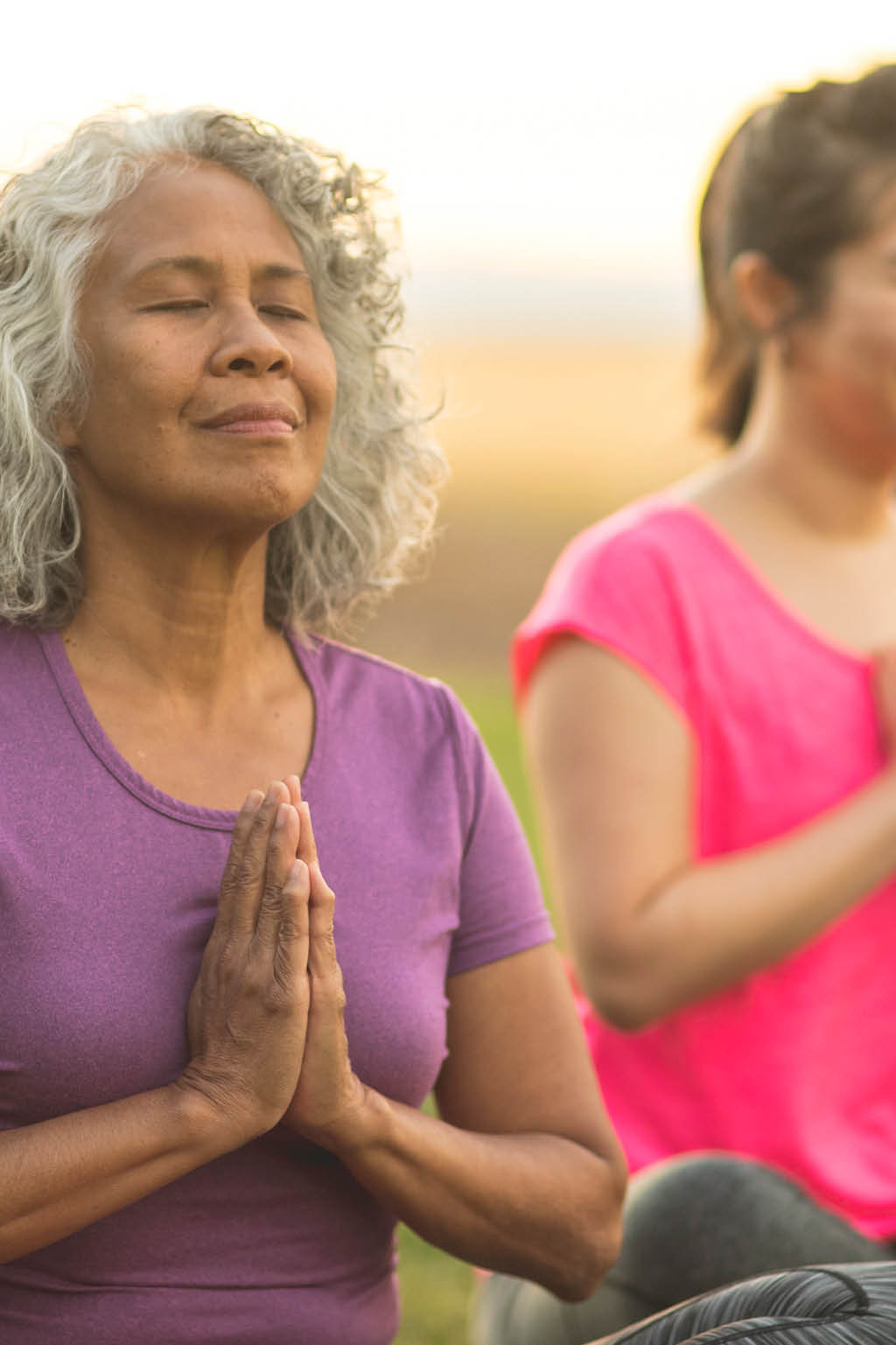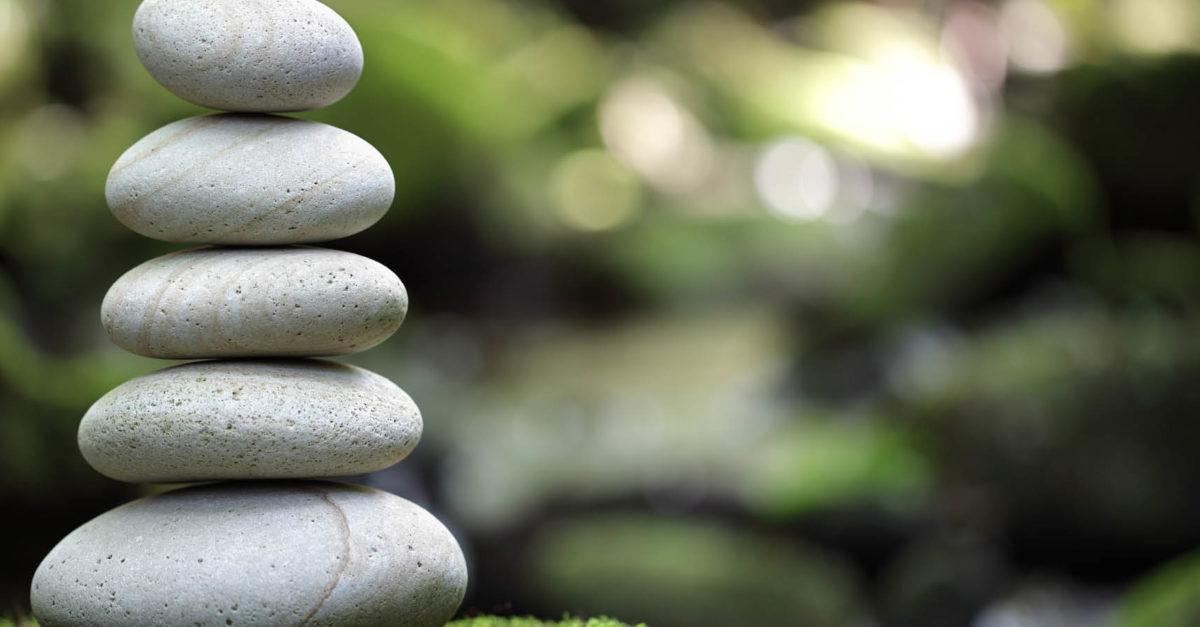The Here and Now
The journey of self-actualization is lifelong; it requires effort, patience, and, above all, living in the moment. Once a wellness practice reserved for those who splurged on yoga retreats in the farthest corners of the world, mindfulness was not something the average person understood or even wanted to understand. In recent years—thanks in part to the ever-evolving discussion surrounding mental health and a plethora of companies incorporating mindfulness training into their workplace—this Eastern practice entered into the mainstream.
Dr. Jon Kabat-Zinn can be largely credited for taking mindfulness from Eastern culture to Western culture. A professor at the University of Massachusetts, he created an eight-week program called Mindfulness-Based Stress Reduction (MBSR) in the late 1970s, which blazed the trail for this wellness practice to gain momentum throughout the country.
Clinical psychologist Dr. Melanie Greenberg defines mindfulness as living with compassion, being in the present moment, and having an acute sense of self-awareness. You may be saying to yourself, Great, but how do I achieve that? Most people find it difficult enough to get out of the cognitive cycle of overthinking—worrying about their future and regretting their past—let alone adding another mental practice to the list. But don’t be so quick to dismiss this exercise, as there’s a lot to gain from incorporating mindfulness into your daily life.
JUST BREATHE
There are countless self-help books, articles, and blogs dedicated to the subject of mindfulness, written by experts as well as people who have been transformed by this wellness practice. According to Harvard Medical School, it’s proven to be an effective tool for those who are struggling with anxiety and depression and even for people who are just suffering from a bad day. One way to ease anxious thoughts is by way of mindful meditation—a common way to practice mindfulness.
Mindful meditation simply means training your brain to be in the present moment—focusing all thoughts, feelings, and emotions on what you’re currently experiencing. Mindfulness and meditation go hand in hand for many, although Dr. Greenberg stresses that it doesn’t have to be that way. “Meditation is important because it gives you the experience of mindfulness, but it’s not all or nothing. It’s more about being aware of your senses and checking in with yourself to see how you’re feeling,” she says.
Taking a minute to be in tune with your emotions—especially the bad ones—can help you recognize what’s going on in your head and deal with it sooner. You can practice this on public transportation, in a seated position on your bed, or as you walk through a park on a sunny day. Instead of running from your problems, you are acknowledging them and are therefore in better control. Mindful meditation can be done on a larger scale, such as when you’re going through a life-changing event or even when smaller issues arise. Mindfulness comes into play when you practice the exercise of breathing. You’re not thinking about where you need to be, how late you’re running, or predicting the length of the coffee line; you’re focusing on nothing else but your breath and the rise and fall of your chest.

IMPROVE YOUR RELATIONSHIPS
The word mindfulness itself implies the individualistic nature of the practice, but Dr. Greenberg contrasts this by saying, “What people tend to forget is that mindfulness is also about other people. When you’re engaging in conversations, are you truly listening to that person? Are you noticing how they’re feeling?” In other words, part of being mindful is having emotional intelligence. As defined by Psychology Today, emotional intelligence is the ability to identify and handle your own emotions, as well as being in tune with those of others. When you’re aware of your own feelings, you can better assess how the other person is feeling and respond in an appropriate manner.
You can’t have emotional intelligence without mindfulness. This crucial step of self-awareness lays the foundation for an emotionally intelligent interaction. Ask yourself: How can you truly be aware of someone else’s emotional state if you’re not mindful of your own? This can be especially useful in situations of conflict, when you’re trying to alleviate said conflict or stop a situation from arising altogether. Be mindful; notice what’s bothering you or causing you joy, and translate that into your relationships with others.
MINDFULNESS AND TECH
The debate about whether technology is beneficial or detrimental to your mental health is ongoing. However, when it comes to mindfulness, it can be both. Dr. Greenberg makes a case for both sides. As far as the positive aspects are concerned, she stresses, “Technology is great for mindfulness because it makes it more accessible to the average person. People are more likely to engage with this practice if they have the tools that give them imagery and something to engage with.” Apps like Headspace, Calm, and 10% Happier are all built on the premise that taking a few minutes out of your day to be present can shift your mind-set to a more positive place. The content within these applications can help someone who’s unsure of where to start when it comes to practicing mindful behavior.
On the other hand, technology and the idea of mindfulness aren’t always positively aligned. It doesn’t take a technology expert to help us realize that our devices can cause major distractions. If a blog post takes too long to load, we exit out. If our favorite social media app is down, we seek entertainment elsewhere. The basis of mindfulness is the ability to slow down, breathe, and live in the present moment—something that technology doesn’t always facilitate. Dr. Greenberg adds, “Kids are using apps like Snapchat from a very young age. All these aspects of technology, while great if used properly, can also add to distracting behavior.” Much like eating pizza or drinking alcohol, technology is best consumed in moderation. A total tech detox isn’t necessary to live a mindful life, and, for many, disappearing from social media isn’t feasible. But you don’t have to join the average American in spending four hours on the phone every day, either. There’s a happy medium to be found that can add value to cultivating a calmer life for yourself.

STRESS, BEGONE
The most prevalent mental illness in the nation is anxiety, with anxiety disorders affecting nearly forty million adults, according to the Anxiety and Depression Association of America. Similarly, major depressive disorder affects over sixteen million, and it’s not uncommon for people to be diagnosed with both. Unsurprisingly, mindfulness is shown to help those who suffer from a mental illness or those who are simply bogged down from a stressful situation. Dr. Greenberg explains this, saying, “If you practice mindfulness frequently, it’s shown to lessen the stress on the fight-or-flight part of the brain and makes the prefrontal cortex more powerful. Mindfulness can also help lower blood pressure, which is one indicator of stress.” As the world becomes more and more fast-paced, taking a moment or two to slow down can help you better understand yourself and others, and it can greatly enrich your overall well-being.
TRY IT FOR YOURSELF
Practicing mindfulness is different for everyone, and there is no right or wrong way to do it. But here are some tips to help you get started:
- SIT DOWN IN A QUIET PLACE. This will help bring a sense of calmness to your mind and body.
- TAKE SLOW, DEEP BREATHS. Be fully aware of your body and your mind during this time.
- BE PRESENT. Be aware of what thoughts are coming to you, and strive to put your mind in the present moment. Practice this for around ten to twenty minutes.
- GIVE YOUR FULL ATTENTION. Don’t let yourself
be distracted by things happening around you, by your phone, or by your ego. When engaging in conversation, be wholly present. Truly listening to what someone is telling you requires effort, both verbally and nonverbally. Make eye contact, ask questions, and don’t pass judgment.
It’s really that simple. Mindfulness is about bringing meaning to even the most humdrum tasks—people tend to practice it while doing the dishes, eating a meal, or going for a walk. Welcome mindfulness into your life, and you’ll feel restoration enter your mind, body, and spirit, breath by calming breath.
For more info, visit mindful.org









